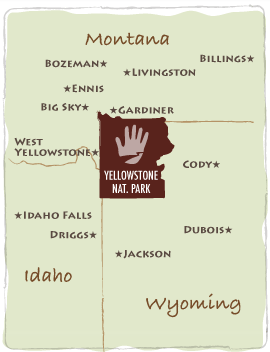Top 5 Climate Strategies: Adapting to Yellowstone's Environmental Shifts
Introduction
Yellowstone National Park, revered as a hallmark of natural beauty, stands at the crossroads of an escalating challenge posed by climate change. Its expansive and varied landscapes, ranging from geothermal wonders to lush forests, are confronting unprecedented threats stemming from the changing climate patterns. Protecting the park's delicate ecological balance demands a proactive approach. The need for implementing adaptive strategies has never been more critical to ensure the continued preservation of its diverse ecosystems. If you're seeking information on medical school personal statement editing, professional services are available at https://essaysworld.net/medical-school-personal-statement-editing-service. This is vital for maintaining the park's ecological integrity for generations to come.
Understanding Yellowstone's Environmental Changes
Yellowstone’s vibrant ecosystems, ranging from iconic geysers to expansive forests, are experiencing subtle yet significant transformations due to climate change. The dwindling snowpack affects water availability, impacting plant and animal life. The warming climate has facilitated the bark beetle infestation, leading to substantial damage in forests. Animals are adjusting their behaviors and migration patterns in response to these environmental changes.
Target Audience Overview
For Nature Enthusiasts and Tourists: Visitors to Yellowstone may observe discernible effects of climate change—such as shrinking glaciers, altered wildlife behaviors, and evolving landscapes. Understanding these changes enhances the visitor experience and fosters personal contributions to conservation efforts. Simple actions, like minimizing waste and following park guidelines, significantly contribute to preserving this natural gem.
For Conservationists and Environmentalists: Preserving national parks in the face of climate change is an ongoing challenge. Previous successes in conservation emphasize the need for continually adaptive strategies. Implementing innovative and flexible measures is crucial to combat evolving threats and maintain Yellowstone's intricate ecosystems.
For Researchers and Academics: Scientific inquiry is fundamental in comprehending how Yellowstone's ecosystem responds to climate change. This knowledge informs the development of proactive methodologies and aids in implementing sustainable management practices. Pioneering research into climate adaptation strategies is essential to equip the park with the tools necessary for resilience.
Top 5 Climate Strategies for Yellowstone
1. Biodiversity Preservation and Management: Preserving Yellowstone's diverse species demands comprehensive conservation efforts, including habitat restoration and species-specific management plans. Restoration initiatives aim to rejuvenate degraded habitats, promoting the resurgence of endangered species.
2. Ecosystem Resilience and Restoration: Strategies such as controlled burns, habitat preservation, and the control of invasive species are vital for restoring and maintaining the park's natural balance. Implementing controlled burns assists in regenerating vegetation, offering renewed habitats for various species.
3. Community Engagement and Education: Engaging the public through educational programs and community involvement fosters a culture of conservation. It's essential to educate visitors on the significance of their role in preserving the park and encourage environmentally conscious behaviors.
4. Climate-Adaptive Infrastructure: Constructing climate-resilient infrastructure, such as sustainable buildings and transportation systems, fortifies the park against environmental changes and evolving climate conditions. The integration of sustainable practices minimizes the ecological footprint on the park.
5. Science and Technology Innovation: Cutting-edge research and technological innovation are crucial in understanding and mitigating the impacts of climate change on Yellowstone. Advanced technologies for monitoring, conservation, and ecological management significantly contribute to decision-making processes.
Case Studies and Success Stories
Exemplary initiatives showcasing the practical application of these strategies in Yellowstone and analogous environments offer invaluable insights into effective conservation practices and their positive outcomes. These projects, ranging from restoring native habitats to reintroducing endangered species, stand as beacons of hope in the preservation of delicate ecosystems. These initiatives serve not only as success stories but also as inspirational models, demonstrating how collaborative efforts and innovative strategies can rejuvenate and sustain ecosystems. The continued dedication to such endeavors is instrumental in furthering the mission of environmental preservation, not only in Yellowstone but also in ecologically diverse areas across the globe.
Challenges and Future Considerations
Despite the profound significance of these strategies, their execution confronts multifaceted challenges. Overcoming financial, logistical, and societal barriers is crucial for the successful implementation of these adaptive measures. The complexities involved necessitate a concerted effort from various stakeholders, including governmental bodies, conservation organizations, and public engagement. For these strategies to yield the desired impact, the fusion of diverse perspectives and resources becomes imperative. Further research initiatives must aim to delve into more advanced climate-resilient measures, emphasizing a holistic approach that harmonizes traditional ecological knowledge with the latest scientific advancements. This interdisciplinary collaboration holds the key to crafting sustainable solutions capable of effectively combating the evolving environmental threats faced by Yellowstone and other sensitive ecosystems worldwide.
Conclusion: Safeguarding Yellowstone
Safeguarding Yellowstone against the tumultuous shifts induced by climate change necessitates more than individual efforts—it demands a collective commitment. Every single action, whether taken by a park visitor or a dedicated researcher, holds a pivotal role in the ongoing preservation of this natural wonder. It's within the tapestry of these combined efforts that Yellowstone's resilience can be fortified. Each conscious step, every concerted research project, and every implemented strategy becomes a thread in the fabric of preservation. The legacy of Yellowstone's splendor for future generations hinges on our ability to protect, adapt, and evolve with its changing landscape. It's a testament to our dedication to the environment, and a promise to the forthcoming stewards of this remarkable ecosystem.


